Paddling up front in a canoe looks fun yet also comes with a lot of responsibility. So what’s the experience really like guiding a canoe from the bow seat? Is it an exciting adventure or harder than it appears?
Sitting in front of a canoe allows an immersive perspective unmatched from the stern but requires Strong matches and teamwork. The bow paddler channels adrenaline weaving through rapids while calling pace and track obstacles. Strong communication and trust between partners ensure smooth syncing strokes.
Curious about what riding upfront demands versus offers? Join me in examining perks like reading the river’s flow balanced with challenges like avoiding collisions.
A Closer Look at the Front of Canoe
While paddlers often focus on the back, the front of a canoe, known as the bow, plays a crucial role in its design and performance. Let’s unravel its secrets!
Sculpting the Journey:
- Shape Matters: The bow’s form influences performance. Plumb bows slice through water efficiently, while recurved bows offer better wind resistance. Think of it as your canoe’s “beak,” parting the currents.
- Buoyancy Balance: Unlike the flat-bottomed stern, the bow usually rises higher, providing lift and maneuverability. Imagine a seesaw: the bow dips slightly when paddled, while the stern rises, maintaining equilibrium.
Mastering the Dance:
- Bow Paddling Prowess: The bow paddler, often a skilled navigator, sets the canoe’s rhythm. Their strokes steer the direction, guiding the craft with finesse. It’s like being the conductor of a watery orchestra!
- Communication is Key: Clear communication between the bow and stern paddlers is vital for smooth sailing. Think of it as a canoe conversation, ensuring coordinated strokes and seamless turns.
A Tale of Two Ends:
- Stern Strength: The stern, often heavier and wider, provides stability and handles cargo. It’s the base camp, the anchor in the storm.
- Bow’s Agility: The bow, lean and nimble, carves through water, responding quickly to commands. It’s the explorer, the ever-curious vanguard.
So, the next time you step into a canoe, remember the bow’s silent song.
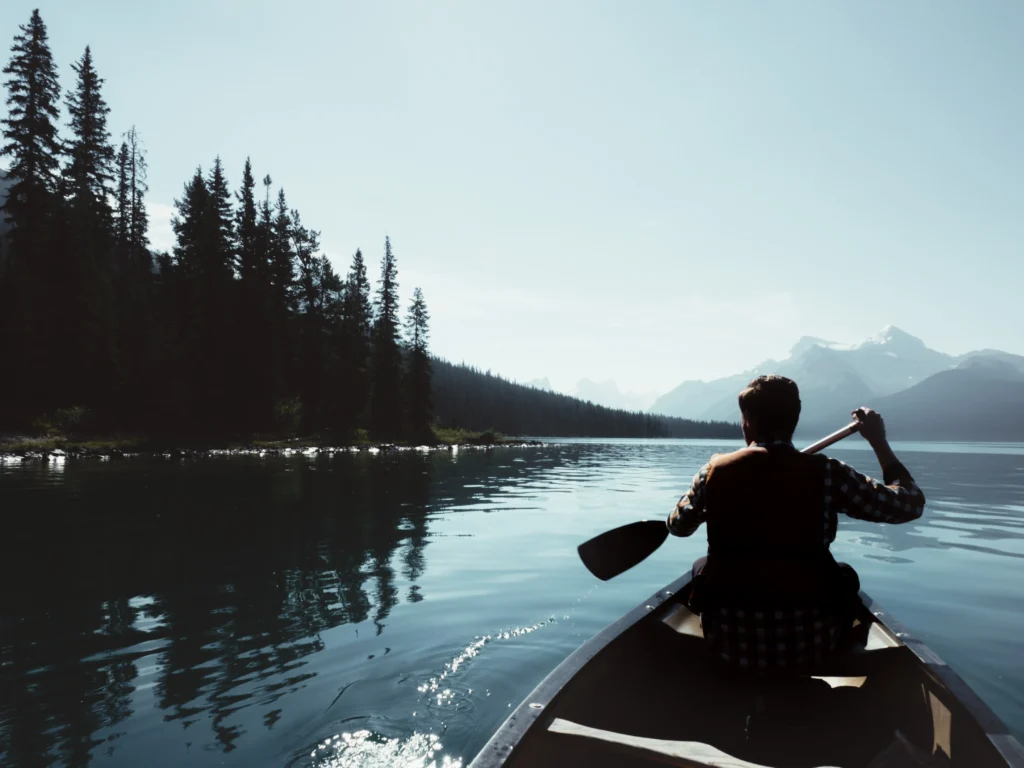
The Front Seat: Commanding the View
The front seat in a canoe offers a unique experience. Positioned at the canoe’s bow, it provides an unobstructed, panoramic view of the surroundings, making it ideal for nature lovers and photographers.
This seat is less about steering and more about setting the pace and rhythm of the paddle strokes. It’s a spot where you can immerse yourself in the environment, free from distractions.
The front seat is perfect for those who enjoy leading the way and embracing the full visual splendor of their journey, offering a front-row seat to nature’s beauty.
Paddling from the Front: Techniques and Tips
Being the bow paddler, or “Canute,” isn’t just about scenery and daydreams. You’re the orchestra conductor, setting the canoe’s rhythm and guiding its graceful waltz across the water. But how do you master this unique role? Buckle up, Canute, for some pro tips:
Stroke Symphony:
- Forward Stroke: Smoothly dip your paddle near your toes, then power through a torso twist, pulling the blade back alongside the canoe. Imagine slicing through butter!
- Sweep Strokes: Need to turn? A forward sweep (dipping near the stern) pushes the water away, turning you to that side. Reverse sweep for the opposite! Think of it as gently nudging the canoe’s nose.
Harmony with the Stern:
- Communication is Key: Talk it out! “Left forward!” or “Hold that right stroke!” clear instructions keep you paddling in sync. Think of it as a canoe conversation, ensuring a smooth tango on the water.
- Matching Tempo: Watch the stern paddler’s strokes. Mirror their timing and power for balanced, efficient glide. Imagine being two birds soaring in the same wind.
Bonus Perks:
- Obstacle Awareness: Your vantage point lets you spot rocks, logs, or curious turtles ahead. Shout out warnings and adjust strokes if needed. Think of it as being the canoe’s radar, always vigilant!
Remember, Canute, every paddle stroke tells a story. With these tips and practice, you’ll become a maestro of the bow, leading your canoe on unforgettable aquatic adventures!
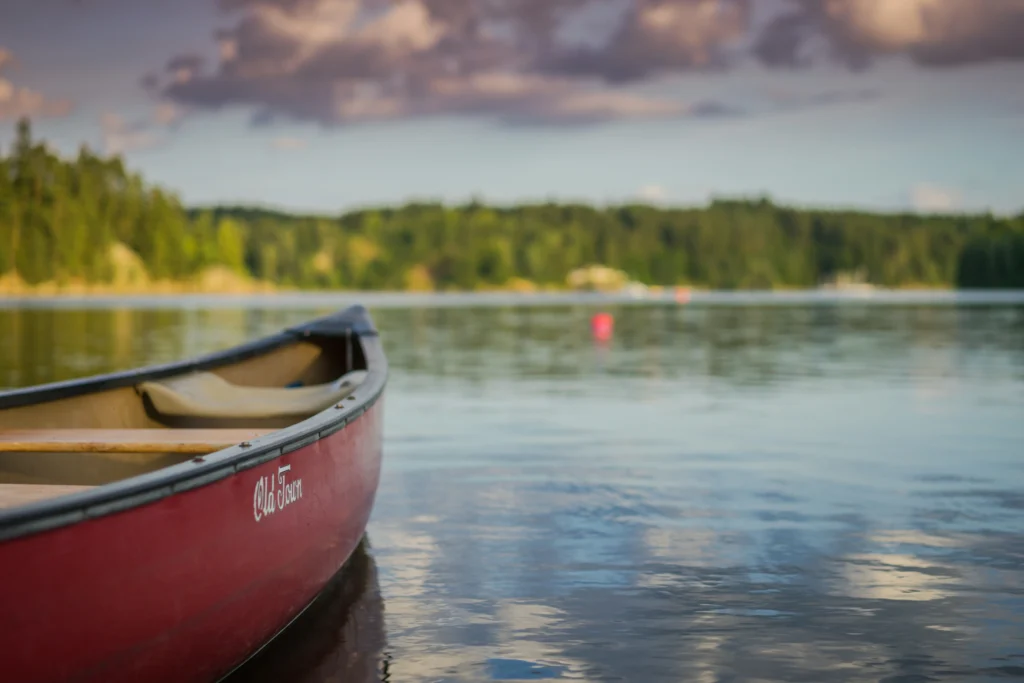
Safety and Comfort in the Front Seat
Ensuring safety and comfort in the front seat of a canoe is crucial for an enjoyable experience. Here are key points to consider:
- Wear a Life Jacket: Essential for safety, a life jacket is a must in case of capsizing.
- Maintain Balance: Keep your body centered and avoid sudden movements to prevent tipping.
- Posture: Sit straight with a relaxed back to avoid strain.
- Foot Positioning: Place feet slightly apart for better stability.
- Regular Adjustments: Shift your position occasionally to prevent stiffness and discomfort.
- Synchronized Paddling: Coordinate with the rear paddler for smooth navigation and added stability.
- Use Footrests: If available, footrests can provide extra support and comfort.
These tips help ensure a safe and comfortable journey in the canoe’s front seat.
Choosing the Right Canoe: Front-Seat Considerations
As the bow paddler, your comfort and control matter, shaping every stroke and turn. So, stay with us and know significant considerations:
Stability Matters:
- Width is your friend: A wider canoe offers more stability, especially for solo paddlers or beginners in the front seat. Imagine a wider base for a steadier ride!
- Rocker vs. Flat: A flat-bottomed canoe tracks straighter, while a rockered one turns more easily. If you’ll be navigating tight corners, consider a slight rocker. Think of it as the canoe’s “flexibility.”
Seating Symphony:
- Adjustable seats: Look for seats that move forward and back, allowing you to find the perfect legroom and paddling position. Imagine fine-tuning your instrument for optimal performance!
- Bow seat height: A slightly elevated bow seat gives you better visibility over obstacles and improves paddling form. Think of it as your canoe’s lookout tower!
Canoe Types & Bow Bliss:
- Recreational canoes: Wide and stable, perfect for leisurely paddles with plenty of legroom for the bow paddler. Think of it as a comfy couch on the water!
- Tandem touring canoes: Longer and narrower, offering good speed and tracking. Look for models with adjustable bow seats for comfort. Think of it as a sleek speedboat with a first-class bow!
- Fishing canoes: Often wider and more stable, with features like rod holders and storage compartments. Choose one with a comfortable bow seat for long fishing expeditions. Think of it as your aquatic fishing throne!
Consider your paddling style, preferred waters, and comfort needs.
Bonus tip: Don’t hesitate to ask experienced paddlers or canoe salespeople for recommendations. Their insights can be invaluable in navigating the perfect choice!

FAQs
Is there a front and back to a canoe?
Yes, a canoe has a distinct front (bow) and back (stern), each designed for specific functions in navigation and stability.
How do you tell the front and back of a canoe?
The front (bow) is often narrower with more space in front of the seat, while the back (stern) is wider and closer to the rear seat.
Who should be in front of a canoe?
The front of the canoe is best for a lighter, less experienced paddler, as it requires less steering and more straightforward paddling.
What does the person in the front of the canoe do?
The person in the front sets the paddling pace and rhythm, focusing on consistent strokes and watching for obstacles, aiding in smooth navigation.
Wrap-Up
The front seat offers adventure, immersion, and leadership while demanding teamwork and awareness. So, grab your paddle, embrace the challenge, and unlock the thrill of commanding the canoe’s bow!
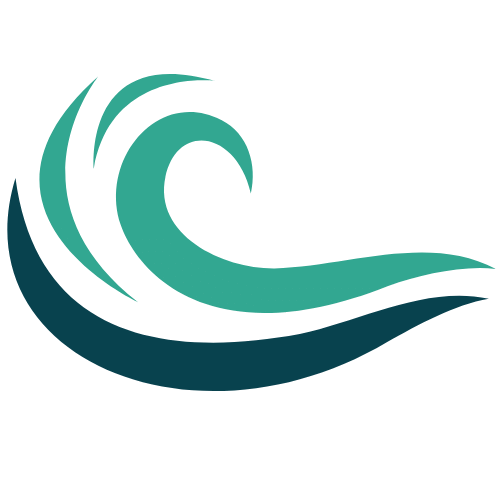
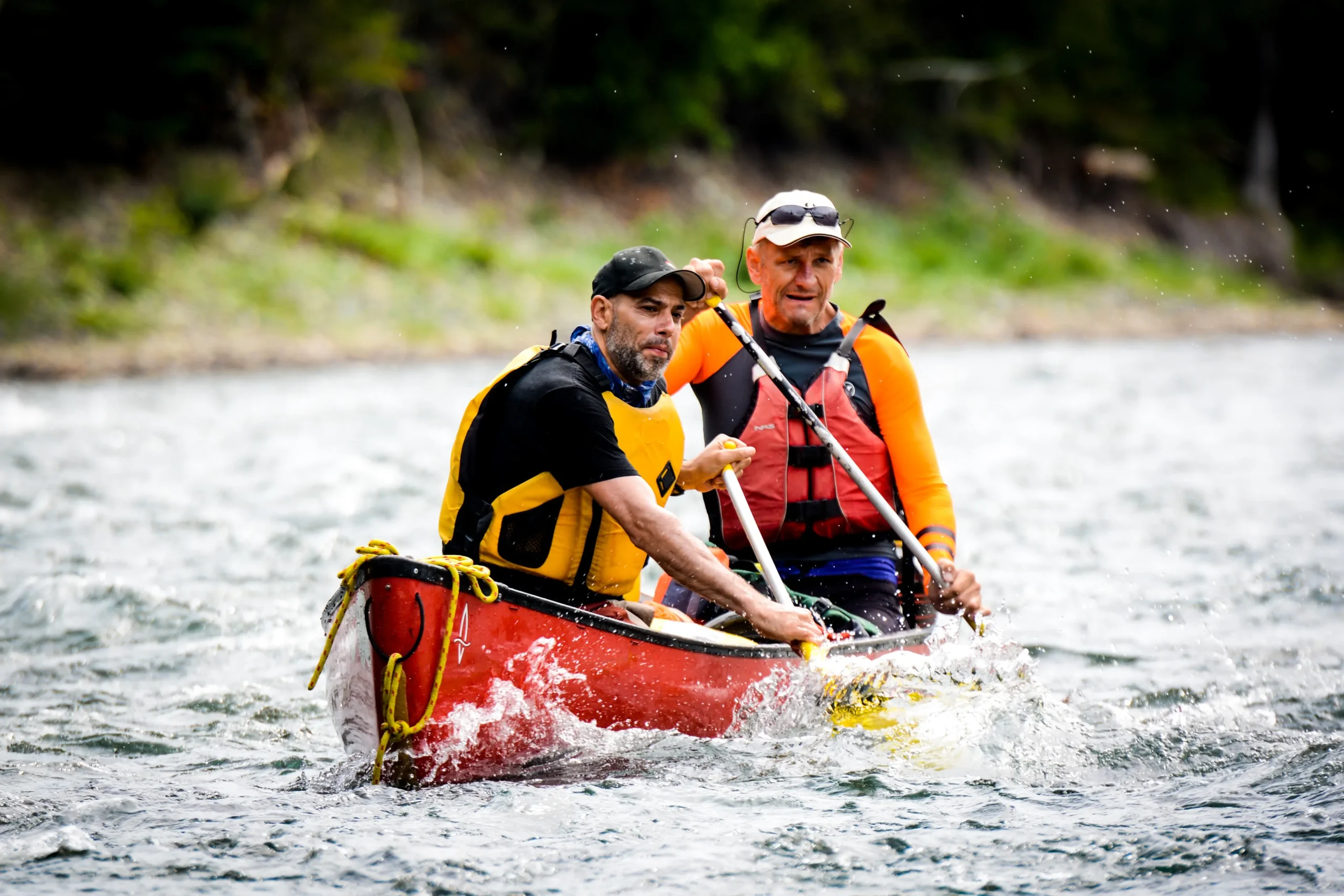
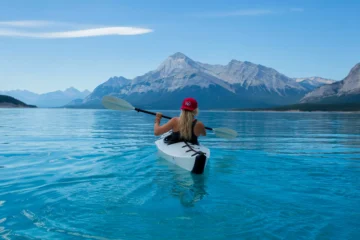
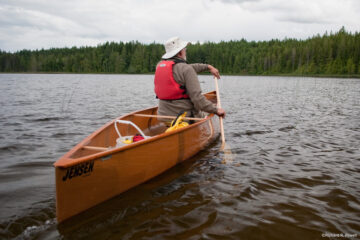

[…] Step-by-Step Guide: Start by laying out the keel, the long strip running along the bottom. Attach ribs to the keel to form the canoe’s shape. These ribs are like the bones of the canoe. Make sure they are evenly spaced. Get to know your canoe better, including identifying the Front of a Canoe. […]
[…] matters in canoeing. The front person sits near the bow. The back person sits near the stern. Balance is key. Distribute weight evenly. This […]